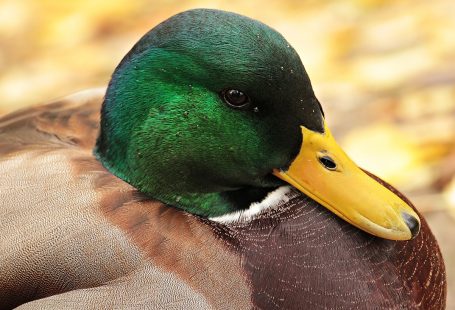Description
The Common Eider Somateria mollissima is the largest duck in the northern hemisphere. It weighs an average of 1 800 g, but its weight can vary from 850 to 3 025 g depending on race, sex, and time of year. There are four Common Eider races in North America; subtle differences in body size and bill structure distinguish each race from the other.
The plumage of the Common Eider varies considerably. It passes through several stages while the bird is growing to maturity, and after the bird reaches adulthood at about three years old, the plumage alternates between two colours each year as a result of moulting, or the replacement of old feathers with new. In addition, the male’s plumage differs from the female’s.
Between the ages of three weeks and three years, male Common Eiders moult their feathers eight times, changing their colour from a juvenile blackish brown to an adult olive-brown and white in winter and a striking black and white, with a small area of light emerald green on the back and sides of the head, during the breeding season. Changes in female plumage are less dramatic: from a juvenile blackish brown, the duck becomes rusty-to-tan. The female’s summer colours provide good camouflage in the vegetation and rocks of the offshore islands on which she breeds.
Common Eiders can live 20 years, one of the longest lifespans among sea ducks. However, the expected lifespan for eider populations which are heavily harvested may be much shorter.
Signs and sounds
Ducklings utter a number of sounds, ranging from a high-pitched note of contentment, which they give especially when they are feeding in the water, to a distress call—a monosyllabic piping.
When they are alarmed, adult Common Eiders emit a series of hoarse kor-korr-korr notes. When courting, drakes give a haunting call much like the cooing of pigeons, which can travel great distances across water on calm days.
Females are less vocal than males. They produce a series of throaty calls during courtship and feeding and an abrupt cluck-cluck-cluck when defending their ducklings from avian predators such as herring gulls.
Habitat and Habits
Of all sea ducks, the Common Eider is the most closely tied to marine habitat. It lives in arctic and subarctic coastal marine areas, where it frequents coastal headlands, offshore islands, skerries, and shoals. The Common Eider rarely leaves the water in the winter, and some races remain as far north as there is open water.
The four races of Common Eiders in North America have different breeding ranges. The southern race Somateria mollissima dresseri breeds from Maine to Hamilton Inlet on the Labrador coast; the northern race Somateria mollissima borealis breeds from northern Labrador to Ellesmere Island in the eastern Canadian Arctic; the Hudson Bay race Somateria mollissima sedentaria remains all year within Hudson Bay; and the Pacific race Somateria mollissima v-nigra breeds from Coronation Gulf in the MacKenzie District of the Northwest Territories to the south side of the Alaskan peninsula. Three subspecies are found outside North America: one in northwest Europe, one in Iceland and a third in the Faeroe Islands north of Great Britain.






